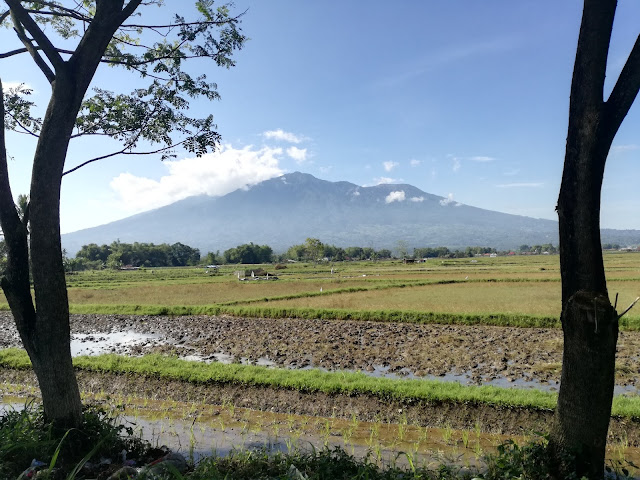Bukit Tinggi is a rich Minangkabau Heritage City in the west of Sumatra Island, Indonesia. It is a 4 hour journey from the the city of Padang. Besides heritage, the city and surrounding has many natural wonders to explore. It is a popular getaway for locals from other parts of Sumatra.
Upon arrival in the afternoon on the first day, we explored the city's iconic public park with a mini zoo and adjacent unique Minangkabau architectural bridge called Limpapeh Bridge that links to the Fort de Kork, a fort built by the Dutch. This was followed by a visit to the local market.
 |
| Limpapeh Bridge |
On second day, it was always a joy to visit the morning market to see the bustling life of a typical colorful local market with varieties of vegetables, fruits and snacks. We then hired a car with driver to explore the outskirts. Our first destination was Koto Gadang, a peaceful village with paddy fields and nice architectural houses. There is also a miniature Minangkabau house. The unique icon of a Minangkabau house is the roof with sharp bending on both ends of the roof.
Our journey continued uphill in a winding road with awesome outskirt sceneries. Upon reaching the peak, we could see Lake Maninjau, a popular lake down below. Nearby there is a village shack making the yummy brown sugar, caking in a mold. After many downhill windings, we reached the tranquil Lake Maninjau. It was raining, hence the view was not very impressive.
 |
| Raining afar |
 |
| Brown sugar |
 |
| Highest point on the way to Lake Maninjau |
 |
| Lake Maninjau |
On third day, we explored Harau Valley, a beautiful valley with waterfalls and cheap flying fox to enjoy a thrill. There is a small hill near the first high drop waterfalls with stairs to climb to have a bird's eye view of the surroundings. Then we had lunch nearby with a typical village view with dried paddy field in the scorching heat. This is the type of environment that brings relaxation. To some urbanites, this could be the most boring with nothing to see environment.
 |
| Haaru Valley |
The journey in the afternoon was more of exploring the different outskirts with lots of paddy fields, villages and a mining man made theme park lake with just locals. This to me, is the luxury of travel, having to see the real authentic lifestyles of the locals
 |
| Traditional Minangkabau house in a village |
 |
| Manmade Lake |
 |
| Lush paddy field |
On the final day, we explored the iconic attractions around the city. The first destination was walking to nearby Panorama Park, where we could see the impressive well known Sianok Canyon from afar. Besides, one could climb up the tower to enjoy the surrounding views. Next, was the popular Japanese Tunnels, where we walked down the dark stairs to the illuminated tunnels built during the Japanese occupation.
 |
| Japanese Tunnel |
 |
| Imbak Canyon |
One should also not miss the Great Wall of Koto Gadang, by climbing along the canyon to the view point. Along the way, we could enjoy the paddy fields and surrounding beauty of the canyon. The highlight at the end of the great wall is the vantage view of the canyon.
The only thing that disappointed me was the food. Bukit Tinggi is famous for its Nasi Kapau, sort of mixed rice with variety of dishes. But I find the food is overly salted. However, one can get other local street food such as local pancake @ roti canai and fried noodles at affordable price.
Overall, I am impressed with the tranquility, nothing much yet many wonderful natures of the city. A simple yet relaxing trip.








































